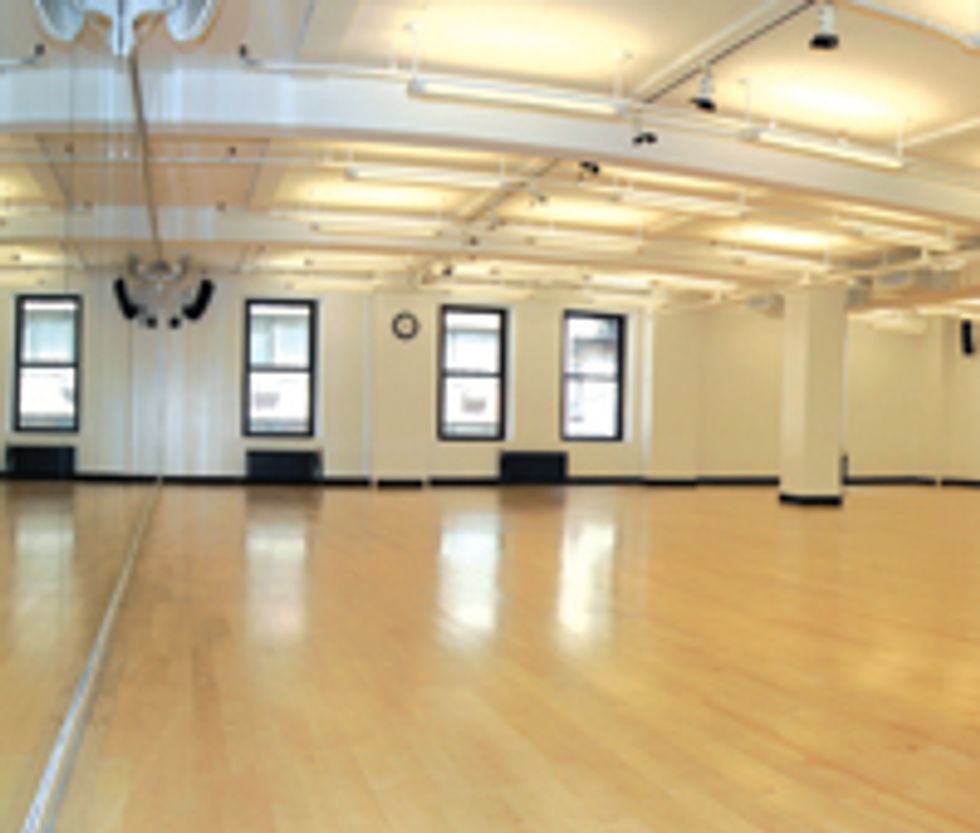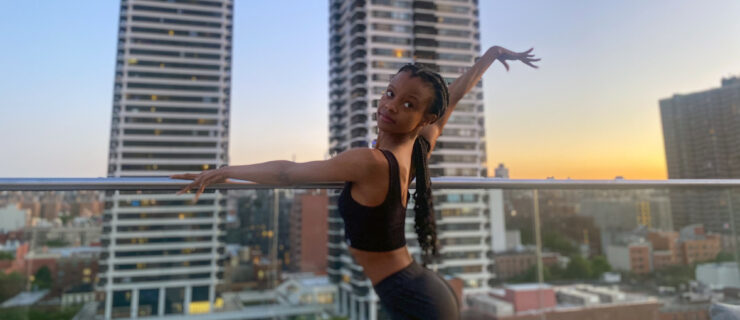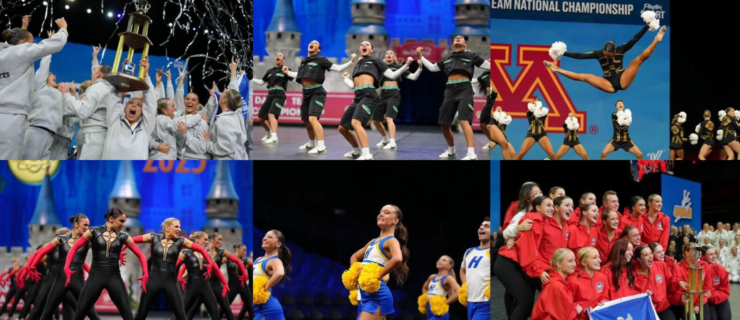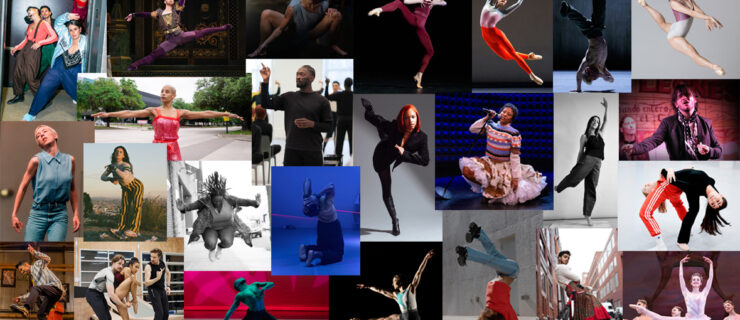Getting the Most Out of Your Studio

Broadway Dance Center (courtesy BDC)
By the time Shannon McCarthy, now 17, started her freshman year of high school, she knew what it felt like to be a star. If you lived more than a few miles outside Shannon’s hometown of Concord, NH, you may have had no idea who she was. But in her neck of the woods, Shannon was kind of a big deal, thanks to her leader-of-the-pack status at her local dance studio.
You know the type. She was the girl with tons of talent whom everyone buzzed about, the one who was front-and-center in every routine. To her friends, it seemed like her life was picture-perfect, but inside, Shannon felt stuck. She had dreams of becoming a professional dancer. While others saw her excelling, she saw herself not being pushed hard enough and falling behind. So, three years ago, Shannon switched studios in an attempt to challenge herself with more intense training. “At times I miss the attention,” she says. “But I had to give that up to keep growing.”
If you’re like Shannon was, the big fish in the proverbial small pond, it can be helpful to take stock of your dance life and make sure your studio is giving you what you need to reach your long-term goals. Of course it feels amazing to be the dancer everyone looks up to, but if you want to eventually work professionally and you can’t recall the last time you struggled in class, it’s probably time to mix things up. You can do this either by amping up your training at your current studio or moving on to a new one that will challenge you more. Read on to find out how you can determine if your studio is meeting your needs, and how to take that next step if it’s not.
What’s right for you?
It’s important to figure out what kind of dancer you want to be. Do you dream of performing professionally? Or are you just taking classes for fun and exercise? Use your personal goals as a yardstick, and measure your studio against them. Do you have access to classes in every style you desire? Are your dance ambitions in line with those of your classmates? If your answer to any of these questions is no, try talking to your teacher to see if she can help. Perhaps she can provide extra classes, send you somewhere else for master classes, suggest a teacher for additional private lessonsor bring in guest teachers. Keep in mind that while some studios may be able to facilitate your requests, others simply may not have the resources required to give you what you want. If that’s the case, it may be time to look for a new studio. (For ideas on how to supplement your training without switching studios, see “Can’t Make the Move?” below.)
Kiki McCleary, 18, took dance classes at a recreation center near Boulder, CO, starting when she was 3 years old. She had supportive, enthusiastic teachers whom she credits with inspiring her love for dance. In middle school, she joined the center’s competitive dance company, and within a few years of being exposed to dancers from other teams on the competition circuit, she realized that dance meant more to her than it did to most of her classmates. “Dance was just something they did after school,” Kiki says. “Over time, it became apparent that dance was more than just an activity for me—it was my life.” This realization ultimately prompted her decision, at 16, to leave the rec center behind and join Artistic Fusion Dance Academy, a local studio that she first noticed at a competition. In her last two years of high school, Kiki spent up to 30 hours per week in the studio (up from the six she’d spent training at the rec center) taking classes and rehearsing with the competition team. Her hard work paid off when she was accepted to pursue a BFA in contemporary dance at the University of North Carolina School of the Arts, where she studied for one year before deciding to move to L.A. to pursue dancing professionally.
Two years ago, Noelle Meers, 14, was also inspired to switch studios after another studio caught her eye at a competition. “Their dancers had beautiful technique and ballet training, and great choreography,” she says. “I wanted to be a part of that.” She had been dancing with her former studio for six years when she made the move, and now she believes she’s in a better position to reach her goals because she has since been exposed to new learning opportunities. “My new studio takes us to more conventions than my old one did, so we regularly interact with professional dancers,” she says. “Now, I’m competing just as much, but I’m also constantly learning new things at conventions.”
Finding a new studio

Craving a more intense dance environment, Shannon McCarthy decided to switch studios to amp up her training. (by Donner Photographic)
Noelle, Shannon and Kiki all say they first noticed their new studios at competitions. While this can be a great method for kicking off a search, Jen Owens, owner of Artistic Fusion Dance Academy, says great competition performances shouldn’t be your only criteria when searching for a new studio. You have to do your homework and find out what goes on behind the scenes at a prospective new studio. “Students shouldn’t just pick a studio because that studio’s team is winning—there’s a lot more to it,” she says. “See what the studio’s philosophy is, find out about their student turnover rate and ask how long the teachers have been there. Pay attention to what they advocate. Awards are a good start, but dancers need to dig deeper. There are studios out there that barely teach any technique in classes—they just clean competition routines. They’ll win at competitions, but the kids aren’t learning.”
So what’s the best way to find out if a studio is right for you? Test it out. Noelle says she sampled a few classes at her new studio before making her switch. Owens also says she frequently receives requests from parents and students interested in visiting the studio and observing classes. “It’s a great way to get in there without making a commitment,” she says. “You get a feel for how the teachers interact with the students, and how the students interact with one another.”
Making the move
Leaving a beloved studio behind isn’t easy, and the transition should be handled with care. If you decide you’ve outgrown your studio, it can be tough to explain your reasons for leaving to your teachers. Make an effort to end your relationship with your studio on a positive note and refrain from picking on the studio or your classmates when explaining your decision to move on. “Dancers should know that their teacher will probably be hurting if they decide to leave, so they should make sure to leave graciously, by expressing gratitude for all that they’ve learned,” Owens advises. “But they should also try not to feel guilty for wanting to move forward.”
Noelle and Kiki both say that switching studios helped them to grow technically and gain confidence. More importantly, it helped them figure out who they are as dancers and cement their long-term goals. “I think there was always a part of me that wanted to make that change, but I guess I didn’t think I could ever dance like the students at Artistic Fusion,” says Kiki. “Once I finally got the courage to make the move, it was like, ‘Oh my gosh, I am one of those dancers.’ ”
Time to Expand Your Horizons?
Still having trouble deciding whether or not you’re in the right place? Ask yourself the following questions. If you answer “yes” to most of them, it’s probably time to start looking for new learning opportunities.
1) Are you often bored in class?
2) Do you have trouble remembering the last time you learned something new in class?
3) Do you have trouble remembering the last time you struggled in class?
4) Are you pretty sure you’re the best dancer at your studio?
5) Do you worry that you’re not getting enough performance opportunities?
6) Are you always front and center in your routines?
7) Do you wish you could try a new dance style, but can’t because it’s not offered at your studio?
8) Do you have social issues with your classmates?
9) Do you feel like your teacher doesn’t push you enough?
10) Do you take dance more seriously than your classmates?
Can’t Make the Move?
If you feel like you’re in a dance-training rut, but you’re not ready or able to switch studios, there are plenty of ways to give your dance regimen a boost without having to make such a dramatic change. Here are four suggestions.
Do your research:
You don’t have to be in class to broaden your dance horizons—just go online! Scour the internet to learn more about dance history and to stay on top of current dance trends (start with the blogs at dancespirit.com/!). “There’s so much information available for free online,” says Christy Curtis, owner and director of CC & Co. Dance Complex in Raleigh, NC. “Watch performance videos of strong artists and companies, then try incorporating their moves into your own dancing.”
Take extra classes:
Ask your teacher if you can take more classes or add private lessons to your schedule. Curtis also recommends supplementing your work in the studio by attending master classes at conventions. Additionally, she advises taking advantage of any dance-related programs, clubs or teams offered at your school, as well as participating in outreach courses that may be available through local college dance programs.
Think outside the box:
Complement your dance classes with non-dance training! Take singing lessons or sign up for an acting workshop through a local theater. “Learn to tell a story as an actor, and it will help you as a dancer,” Curtis says. “After all, half of dancing is about storytelling!”
Keep working on the basics:
Even principal dancers at major companies take beginner classes on occasion. Remember, growing as a dancer isn’t just about learning tricks and advanced moves; it’s also about developing strong, clean basic technique.




